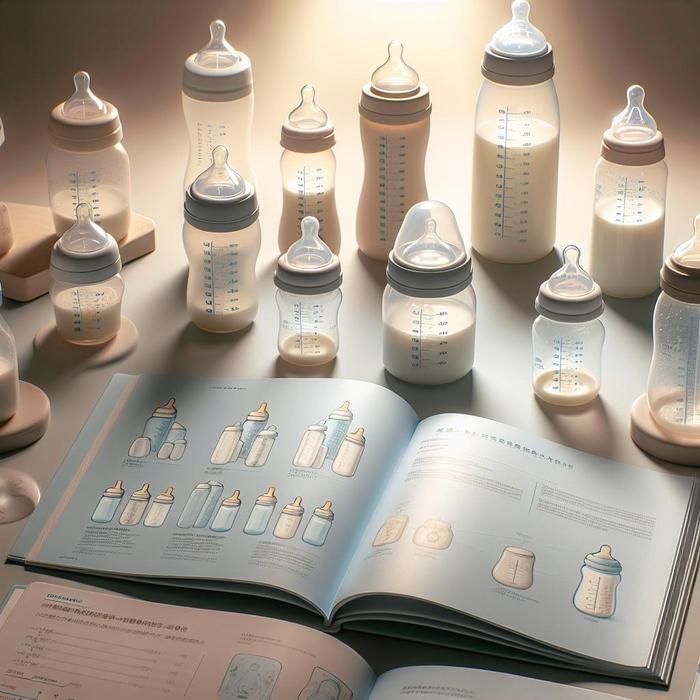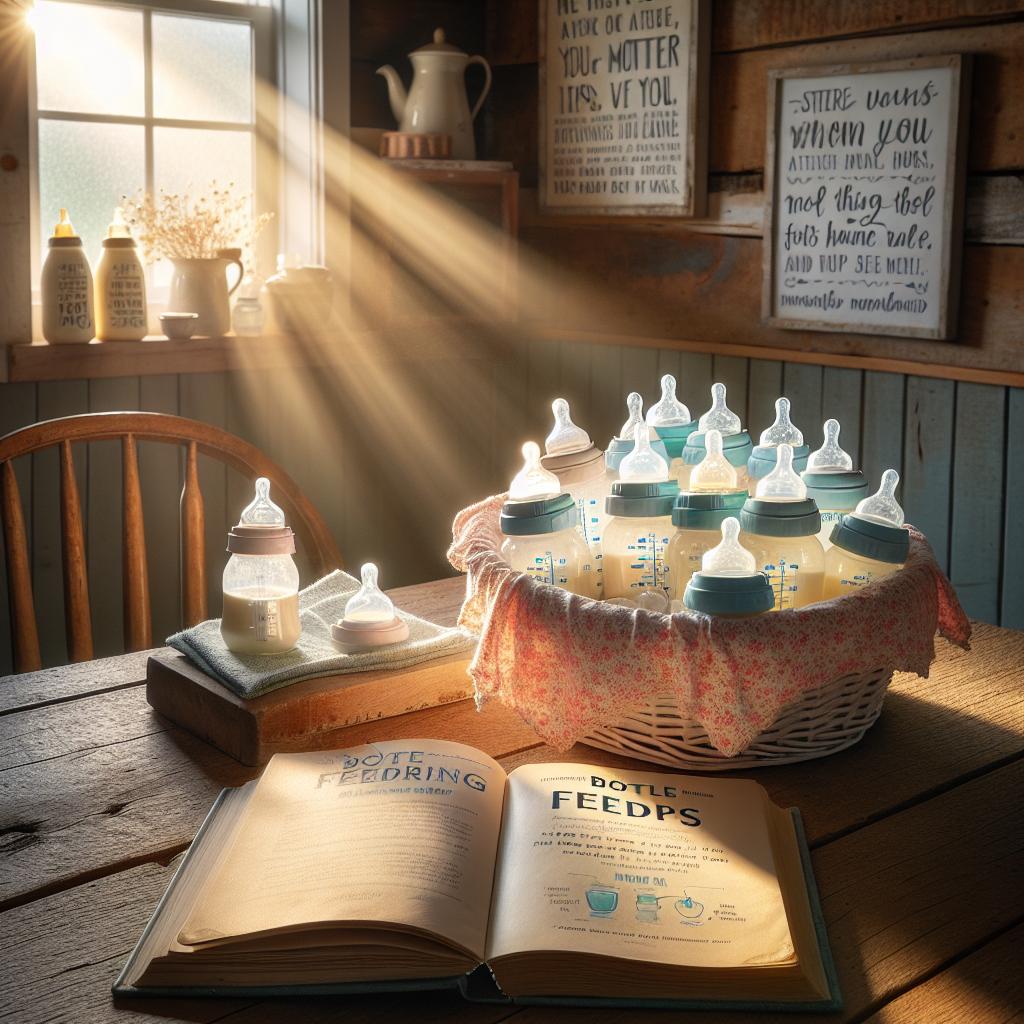Finding the Right Baby Bottle: Essential Factors to Consider
Understanding Your Baby’s Needs
Choosing the right baby bottle for your little one involves more than simply picking the prettiest on the shelf or the one that’s on sale. It’s about understanding your baby’s needs and how different bottles can accommodate these needs. The size of the nipple, the material of the bottle, the bottle’s design, and how easy it is to clean are all crucial elements to consider when choosing baby bottles.
The Importance of Nipple Size and Shape
The nipple is the part of the bottle your baby will be most familiar with. The size and shape can affect how easily your baby can latch on and feed. Pediatric dentists recommend certain types of bottles over others, due to their impact on an infant’s oral health. According to Urban Ape Pediatric Dentistry, bottle nipples that are shaped like the mother’s breast are best as they promote proper oral development.
Deciding on the Bottle Material
When it comes to the material of the bottle, there are a number of suitable options. Glass bottles are sturdy and free from harmful chemicals, but they’re also heavy and can break. Plastic bottles are lightweight and unbreakable, but they can scratch easily, and some parents worry about chemicals in the plastic. Stainless steel bottles are durable and safe but can be pricy and not transparent – so you can’t see how much milk is left. Consider your lifestyle and your baby’s feeding habits when deciding on the best baby bottle material.
The Right Bottle Design
Bottle design is another important factor to consider when choosing baby bottles. Special trends in baby bottles show a move towards more ergonomic designs and bottles that can help to reduce colic. Consider bottles with a venting system to prevent your baby from swallowing air during feedings. It’s also important to choose a bottle that is easy to disassemble and clean to ensure it remains hygienic for your baby.
Ease of Cleaning
As a parent, you’re going to be cleaning a lot of baby bottles. The Mount Sinai Health Library recommends finding bottles that are simple to disassemble and clean. Bottles with wider necks are easier to clean thoroughly by hand, and bottles with fewer parts are less of a hassle to take apart and put back together. Whether you’re cleaning by hand or using a dishwasher, the easier the cleaning process, the better.
Value for Money
Finally, it’s essential to consider value for money. You don’t have to spend a lot to get the best baby bottles. Many affordable brands offer excellent quality bottles that are safe and easy to use. However, it’s worth investing in a bottle that will be durable, easy to clean, and comfortable for your infant to use, to save you money and stress in the long run.
Armed with this information, you’re now ready to start the journey of finding the perfect bottle for your little one. Don’t be afraid to test a few different options. What works for one baby may not work for another, so it may take a little trial and error to find the perfect fit. Thankfully, there are many resources available to help guide you through the process of finding the best baby bottles for your child’s needs.
Moving on to the Next Steps
Once you’ve found the perfect bottle, the next step is understanding how to best use it to improve your baby’s feeding routine. Regardless of the bottle you choose, remember that the most important thing is that your baby is fed and happy. In the next part of this guide, we will cover some important aspects of feeding, such as how to use play dough to enhance your baby’s motor skills and tips for planning a baby-friendly road trip. Stay with us as we continue this rewarding journey of parenting.
Testing Different Baby Bottles
Just as every baby is unique, so too is their preference for bottles. According to Bibs World, it’s not unusual for parents to test a few different bottles before finding one that their baby prefers. It could be helpful to buy a few different brands in smaller packs and observe how your baby responds to each one. Factors such as how easily they can latch on, whether they show any signs of discomfort after feeding, and how much milk they consume can guide you in making your final decision on the best baby bottle.
Adapting to Your Baby’s Stage of Development
Different stages of your baby’s development will require different bottle features. Babies who are transitioning from breastfeeding to bottle feeding, for instance, might require a bottle with a nipple that closely resembles a mother’s breast. Older infants who are capable of holding their bottles may benefit from ergonomic designs with handles. According to Baby Chick, recognizing your baby’s growth and development stages plays a crucial role in selecting the most suitable bottle.
Considering Baby Bottles for Special Needs
Some babies may have special needs that require specific bottle features. Babies with acid reflux, for instance, often benefit from anti-colic bottles that limit the amount of air they swallow. Bottle-fed preemies often need smaller, slower-flow bottles to prevent overfeeding. A comprehensive guide by What to Expect suggests that for babies with unique dietary needs, it’s vital to consider bottles that support those particular needs.
Transitioning from Bottles to Cups
Eventually, your baby will transition from bottles to sippy cups and then to regular cups. Understanding this gradual progression should also be accounted for when investing in baby bottles. Bottles that come with sippy cup lids can make this transition smoother, as your baby will already be familiar with the bottle design. The website Baby Sparks provides additional tips to ensure a seamless transition for your little one.
Understanding Safety Standards
It’s also vital to keep safety considerations in mind when choosing baby bottles. This involves understanding the safety standards set for manufacturing baby bottles and ensuring the brand you choose complies with these regulations. Additionally, consider the safety of materials used, especially where plastic bottles are concerned, ensuring they are BPA-free.
Accepting that Change is Inevitable
Finally, remember that it’s okay if your choices and preferences change over time. The bottle that worked perfectly for the first few weeks might no longer be suitable as your baby grows and his/her feeding habits change. Don’t be too hard on yourself if you’re not getting it right the first time. Remember, what matters most is that your little one is getting the necessary nutrition in a safe, comfortable and happy feeding environment.






